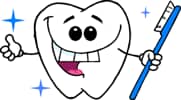
Call Us Today For an Appointment
Address: 1608 Lafayette Ave, Terre Haute, IN 47804
Email: smuddefamilydentistry@yahoo.com
Email: smuddefamilydentistry@yahoo.com
ROUTINE CARE
ROUTINE DENTAL CARE
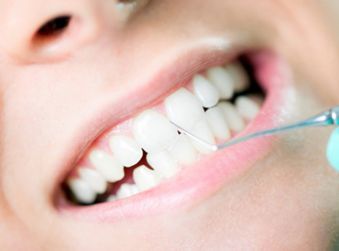
HYGIENE/ROUTINE CLEANINGS
Maintaining good oral hygiene is one of the most important things you can do for your teeth and gums. Good oral hygiene is also important to your overall health and well-being. Cleanings should be performed at least every six months. At your routine visits with the hygienist, plaque and calculus (hardened plaque) will be removed from your teeth. Often areas that you have difficulty cleaning will get buildup that can cause cavities and gingivitis (gum disease). Therefore it is important to keep your regular visits to keep your mouth its healthiest.

HYGIENE/ROUTINE CLEANINGS
Maintaining good oral hygiene is one of the most important things you can do for your teeth and gums. Good oral hygiene is also important to your overall health and well-being. Cleanings should be performed at least every six months. At your routine visits with the hygienist, plaque and calculus (hardened plaque) will be removed from your teeth. Often areas that you have difficulty cleaning will get buildup that can cause cavities and gingivitis (gum disease). Therefore it is important to keep your regular visits to keep your mouth its healthiest.
At your cleaning visits, the Doctor will also perform a routine examination. She will evaluate your gums, tongue, cheeks, lips and palate. The Doctor will further evaluate your teeth for cavities, impaired fillings, fractures in the teeth, periodontal issues, etc. She will discuss with you any treatment recommendations and options that you may have in order to maintain your smile in its optimum health.
Between regular visits to the dentist, there are simple steps that each of us can take to greatly decrease the risk of developing tooth decay, gum disease and other dental problems. These include:
- Brush gently but thoroughly twice a day with an extra soft toothbrush and floss daily.
- Eat a balanced diet and limit sugary & acidic drinks and snacks between meals.
- Use dental products which contain fluoride, including toothpaste.
- Drink plenty of water throughout the day.
- Visit our office regularly
for professional prophylactic cleanings and oral examinations.
- Replace your toothbrush every 3-4 months.
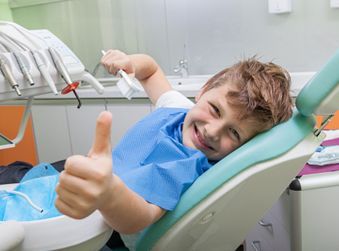
CHILDREN'S DENTISTRY
At Smudde Family Dentistry, Dr. Gray and her Staff really enjoy seeing new children. We want to see our kids get acclimated to the dental office as early as possible so they feel comfortable and, most importantly, welcomed in the office. We act as teachers as well as healers with all our patients.
Many children learn their best oral hygiene habits from their dentist and hygienist and we want children and their parents to know the proper ways to keep their teeth healthy, including:
- Brushing
- Flossing
- How to avoid tooth decay

CHILDREN'S DENTISTRY
At Smudde Family Dentistry, Dr. Gray and her Staff really enjoy seeing new children. We want to see our kids get acclimated to the dental office as early as possible so they feel comfortable and, most importantly, welcomed in the office. We act as teachers as well as healers with all our patients.
Many children learn their best oral hygiene habits from their dentist and hygienist and we want children and their parents to know the proper ways to keep their teeth healthy, including:
- Brushing
- Flossing
- How to avoid tooth decay
We also present dental facts and information in a way that is understandable for children.
From infancy through the teenage years, our staff focuses not only on proper oral hygiene habits, but on dental issues specific to children. Tooth decay is a chronic disease that is the most common among children - five times more common than asthma.
Your child's first birthday is usually the first time they should be brought in to see our dentistry experts. Little ones will begin with a "Happy Visit." At this visit, we welcome them to the office and get them comfortable in the chair. If they are willing, we will look at the teeth and even polish with the child's permission. As your child grows, they will gradually allow us to do more until we are able to clean and polish their teeth and take xrays at normal intervals. We look forward to seeing you and your little ones!
Your child's first birthday is usually the first time they should be brought in to see our dentistry experts. Little ones will begin with a "Happy Visit." At this visit, we welcome them to the office and get them comfortable in the chair. If they are willing, we will look at the teeth and even polish with the child's permission. As your child grows, they will gradually allow us to do more until we are able to clean and polish their teeth and take xrays at normal intervals. We look forward to seeing you and your little ones!
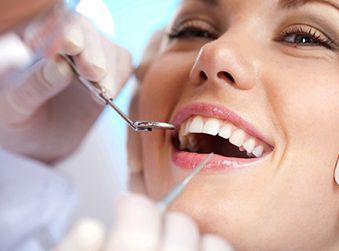
NON-SURGICAL GUM TREATMENTS
The gums, ligaments, and bone around the teeth form the foundation for one's teeth (also referred to as the periodontium). When the periodontium is not healthy, it jeopardizes the teeth just as a bad foundation would threaten the stability of a house. Signs of unhealthy periodontium (gum disease) may be as follows: gums that are red and bleed easily, persistent bad breath, gums that are pulled away from the tooth, loose teeth, and changes in the position or bite of the teeth.
Any of these signs may mean something is wrong. With the proper care, however, it may be possible to return them to a healthy state. This is where appropriate gum treatments come in. If you're having a problem, come in and see us so we can take care of it right away.

NON-SURGICAL GUM TREATMENTS
The gums, ligaments, and bone around the teeth form the foundation for one's teeth (also referred to as the periodontium). When the periodontium is not healthy, it jeopardizes the teeth just as a bad foundation would threaten the stability of a house. Signs of unhealthy periodontium (gum disease) may be as follows: gums that are red and bleed easily, persistent bad breath, gums that are pulled away from the tooth, loose teeth, and changes in the position or bite of the teeth.
Any of these signs may mean something is wrong. With the proper care, however, it may be possible to return them to a healthy state. This is where appropriate gum treatments come in. If you're having a problem, come in and see us so we can take care of it right away.
The treatment usually involves a deep cleaning or root planing done under a local anesthetic, along with local antibiotic agents. If the gum disease gets too severe it may need to be treated through surgery or extraction. This is why it is important to get it treated at the first sign of a problem.
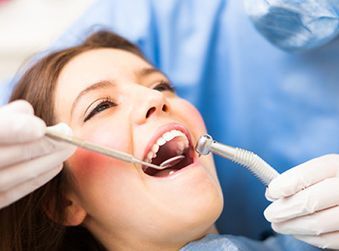
FILLINGS
Fillings are done to remove decay, and restore the affected tooth structure to its normal shape and function. It is called a filling because new material fills the hole that decay has created. If you have a tooth that requires a filling, the Doctor with remove the decayed tooth material, clean the affected area, and then fill the cleaned cavity with a filling material.
Teeth can be filled with bonded tooth colored composite resin or amalgam. If caught early enough, cavities can be treated easily and painlessly. If not treated decay can lead to tooth pain and/or infection, and the tooth could need root canal treatment or extraction.

FILLINGS
Fillings are done to remove decay, and restore the affected tooth structure to its normal shape and function. It is called a filling because new material fills the hole that decay has created. If you have a tooth that requires a filling, the Doctor with remove the decayed tooth material, clean the affected area, and then fill the cleaned cavity with a filling material.
Teeth can be filled with bonded tooth colored composite resin or amalgam. If caught early enough, cavities can be treated easily and painlessly. If not treated decay can lead to tooth pain and/or infection, and the tooth could need root canal treatment or extraction.
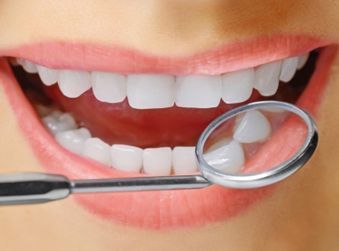
BONDING
Bonding involves adhering composite resin material that is matched to the color of the tooth, usually to the front of the tooth. This is done to repair damage done to the tooth by decay, to alter the alignment of the tooth, close gaps between the teeth, to maintain periodontally unstable teeth, or for other cosmetic purposes.

BONDING
Bonding involves adhering composite resin material that is matched to the color of the tooth, usually to the front of the tooth. This is done to repair damage done to the tooth by decay, to alter the alignment of the tooth, close gaps between the teeth, to maintain periodontally unstable teeth, or for other cosmetic purposes.
First the surface of the tooth is roughened in order to accept the bonding and hold it. A gel is applied to micro etch the tooth surface, and a primer/bond agent is applied so the material adheres to the surface. Then the material itself is placed on the tooth and hardened with a blue light. The composite resin material is shaped and polished to get a lustrous finish as a last step.

SEALANTS
Sealants are used to fill in narrow grooves in a tooth that cannot be adequately cleaned by brushing. In some cases, the tooth structure has fine grooves or pits which accumulate plaque, not because the person doesn't brush, but because they're too narrow to allow even one bristle into them.
These deep, narrow grooves may develop cavities over time. So the dentist or hygienist will brush on a coating that fills in the grooves and pits, making it possible to brush off all the plaque and keep your teeth healthy.

SEALANTS
Sealants are used to fill in narrow grooves in a tooth that cannot be adequately cleaned by brushing. In some cases, the tooth structure has fine grooves or pits which accumulate plaque, not because the person doesn't brush, but because they're too narrow to allow even one bristle into them.
These deep, narrow grooves may develop cavities over time. So the dentist or hygienist will brush on a coating that fills in the grooves and pits, making it possible to brush off all the plaque and keep your teeth healthy.
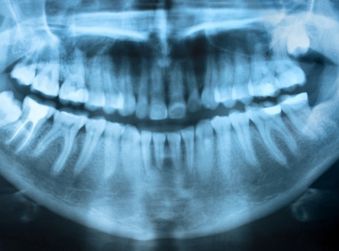
X-RAYS
This is a focused beam of X-Ray particles which produces an image on special sensor, showing the structure through which it passed. This gives the familiar black and white images that doctors and dentists use to diagnose problems. X-rays are a necessary part of the diagnostic process, and not to use them could lead to undiagnosed disease.
Without an x-ray of the whole tooth, and supporting bone and gum tissues, there is no real way to detect infection or pathology that requires attention.

X-RAYS
This is a focused beam of X-Ray particles which produces an image on special sensor, showing the structure through which it passed. This gives the familiar black and white images that doctors and dentists use to diagnose problems. X-rays are a necessary part of the diagnostic process, and not to use them could lead to undiagnosed disease.
Without an x-ray of the whole tooth, and supporting bone and gum tissues, there is no real way to detect infection or pathology that requires attention.
In our office, we use digital radiography which allows us to take x-rays using 50-70% less radiation than conventional x-rays. Coupled with computer monitoring, digital x-ray technology allows us to enhance the images for better diagnosis of dental concerns and we are often able to find cavities while they are still very small and treated minimally.
Click For Patient Forms
Address: 1608 Lafayette Ave, Terre Haute, IN 47804 | Email: smuddefamilydentistry@yahoo.com
| Phone: 812-466-9826
Business Hours: Mon-Thu 8:00 AM - 5:00 PM





Address: 1608 Lafayette Ave, Terre Haute, IN 47804 | Email: smuddefamilydentistry@yahoo.com
| Phone: 812-466-9826
Business Hours: Mon-Thu 8:00 AM - 5:00 PM





Address: 1608 Lafayette Ave, Terre Haute, IN 47804 | Email: smuddefamilydentistry@yahoo.com
| Phone: 812-466-9826
Business Hours: Mon-Thu 8:00 AM - 5:00 PM





Content, including images, displayed on this website is protected by copyright laws. Downloading, republication, retransmission or reproduction of content on this website is strictly prohibited. Terms of Use
| Privacy Policy
